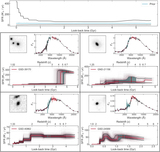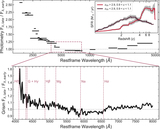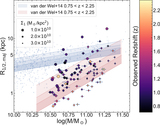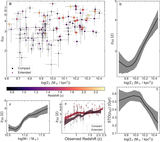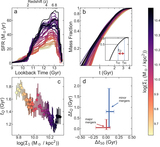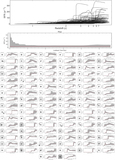Image Details
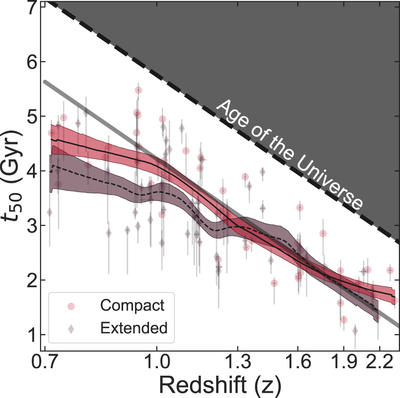
Caption: Figure 7.
The formation age (t50) as a function of observed redshift, zgrism for the quiescent galaxy sample. The formation age is the lookback time from the observed redshift for a galaxy to its formation redshift, z50, when it had formed 50% of its stellar mass. The symbols divide the sample into subsamples of compact (red circles, ﹩\mathrm{log}{{\rm{\Sigma }}}_{1}/({M}_{\odot }\,{\mathrm{kpc}}^{-2})\gt 10﹩) and extended sources (purple diamonds, ﹩\mathrm{log}{{\rm{\Sigma }}}_{1}/({M}_{\odot }\,{\mathrm{kpc}}^{-2})\lt 10﹩). The solid swath tracks the trend for each subsample using the LOWESS algorithm with bootstrapping. The dashed diagonal line demarcates the age of the universe at the observed redshift, and the solid gray line shows the age of the universe minus 1.5 Gyr. At high redshift, ﹩z\gtrsim 1.25﹩ the galaxies’ formation ages mostly track the age of the universe offset by ∼1.5 Gyr. At lower redshifts the populations skew toward more recent formation, but at different redshifts. The extended sample skews toward lower t50 at earlier times (﹩z\lesssim 1.25﹩), while the compact galaxies skew toward lower t50 at later times (﹩{z}_{50}\lesssim 0.9﹩).
Copyright and Terms & Conditions
© 2020. The American Astronomical Society. All rights reserved.



